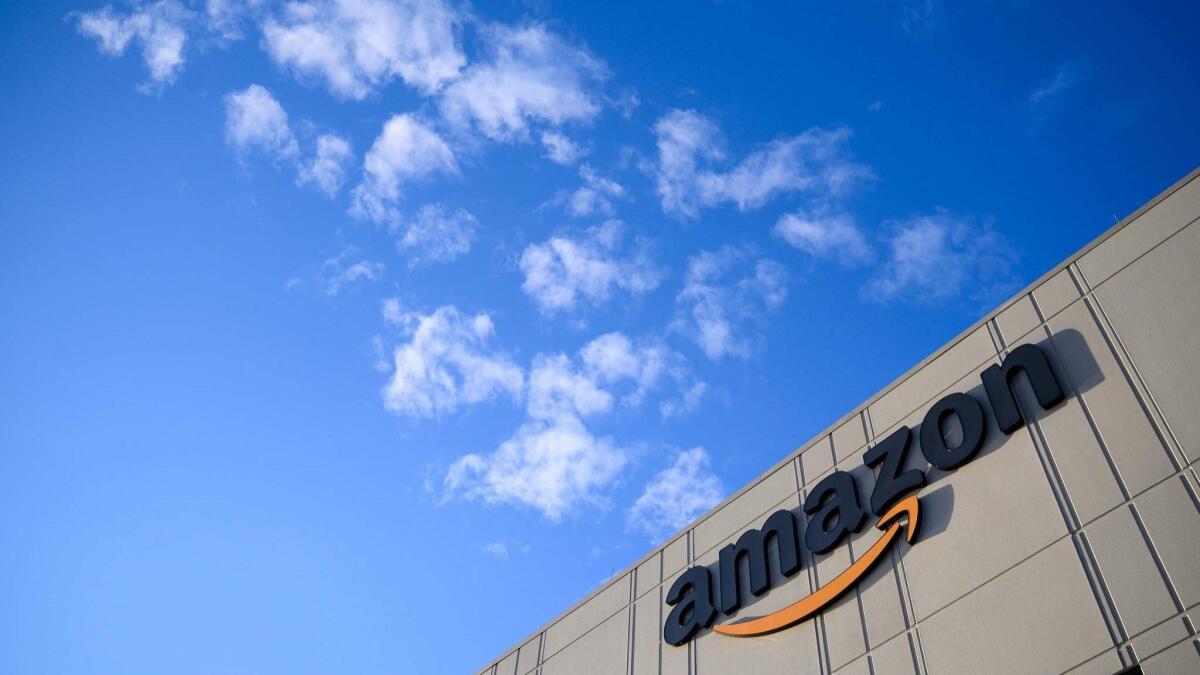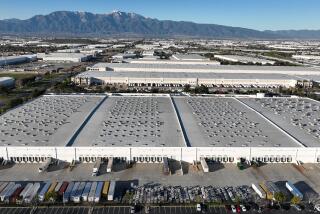Jeff Bezos just confirmed Amazon’s growth is slowing

The annual Amazon.com Inc. shareholder letters from CEO Jeff Bezos are eagerly awaited in Silicon Valley for pearls of wisdom from the world’s richest man and an admired business leader. This year’s edition was extra-revealing, although maybe not in the way Bezos intended.
Bezos’s latest letter, released on Thursday, opens with the first-ever disclosure of Amazon’s total share of sales from the merchants that use the company’s e-commerce sites as a sales conduit. The company has long said that those merchants sell about half of the individual items sold on Amazon, but it has never given their contribution to the total value of physical merchandise sold on the site.
That number — a common e-commerce metric known as gross merchandise volume — has always been a secret at Amazon. Not anymore.
Based on Bezos’ letter and Amazon’s previous disclosures, it’s possible to roughly calculate Amazon’s gross merchandise volume dating back to 2015. It’s a remarkable number — nearly $300 billion worth of goods sold on Amazon last year. Compare that with the $95 billion in total merchandise and ticket sales reported by eBay Inc., the distant No. 2 player in U.S. e-commerce. (Walmart Inc. sells more than $500 billion in merchandise each year, and China’s Alibaba Group Holding Ltd. sells more than $700 billion in goods.)
Extra inventory. More sales. Lower prices. How counterfeits benefit Amazon »
But there’s a dark cloud in Amazon’s figure. The growth of Amazon’s total merchandise sales slowed considerably last year, according to Bloomberg calculations based on Bezos’ disclosures. This figure is not the first sign than Amazon’s retail juggernaut may have slipped a bit.
In 2018, Amazon’s nearly $300 billion in GMV was about a 19% jump from the prior year. That was notably slower than the rates of increase of 24% and 27%, respectively, in 2017 and 2016.
It’s hard to explain the slowdown in Amazon’s merchandise sales growth. If anything, it seems as if Amazon is grabbing a larger share of e-commerce sales and that the internet is stealing more sales from physical stores, which have accounted for something like 90% of all U.S. retail sales. And yet Amazon’s retail sales growth — although still impressive — is slowing noticeably.
For context, total e-commerce sales in the U.S. rose about 14% in 2018, according to calculations from figures released by the U.S. Census Bureau. Amazon generates a large majority of its sales in the U.S., and it’s somewhat surprising that Amazon’s online sales aren’t growing that much faster than the e-commerce category.
Of course, it’s unfair to expect Amazon to grow like a startup forever. But it’s not insignificant that this slowdown has come even as Amazon has attempted to flex more muscle in newer categories.
The company has made a big push into home furnishings, launching private label brands intended to compete with the likes of Wayfair Inc. and West Elm. It also continues to expand its selection of owned brand apparel and has been lining up more marquee names to sell clothes on its site, including J. Crew Group.
And with the expansion of its Prime Now program for items that people want delivered immediately, the base of consumers that can buy groceries online from Amazon is growing rapidly. These grocery efforts are particularly important because the category is among the fastest growing in e-commerce.
All of this is to say that Amazon, in theory, is competing for a greater share of the total retail market than it was even a few years ago. And the slowdown in growth looks more concerning against that backdrop.
It doesn’t seem like a coincidence that this comes as its legacy retail competitors finally seem to have awakened and adapted to the e-commerce era. The two-day Prime shipping that used to distinguish Amazon from the pack? That’s routine now from the likes of Walmart, Target Corp. and others.
And big retailers are getting good at digital options that Amazon can’t provide as easily, such as click-and-collect. Lowe’s Cos., for example, says more than 60% of digital orders are picked up in stores.
Ovide and Halzack write for Bloomberg.






